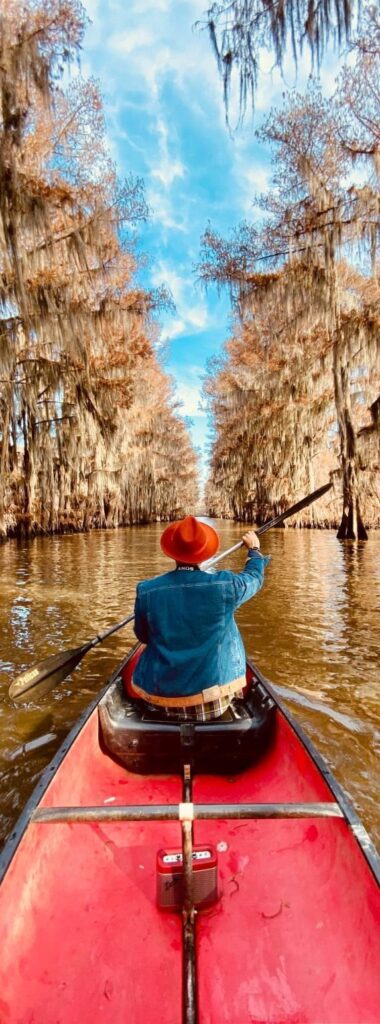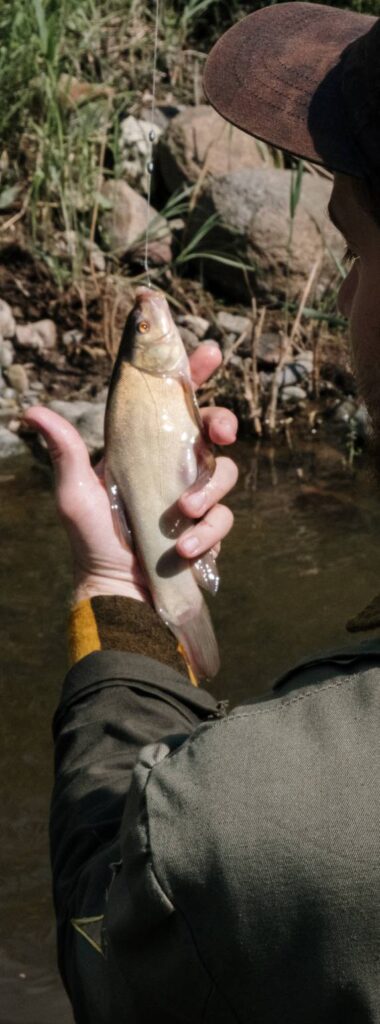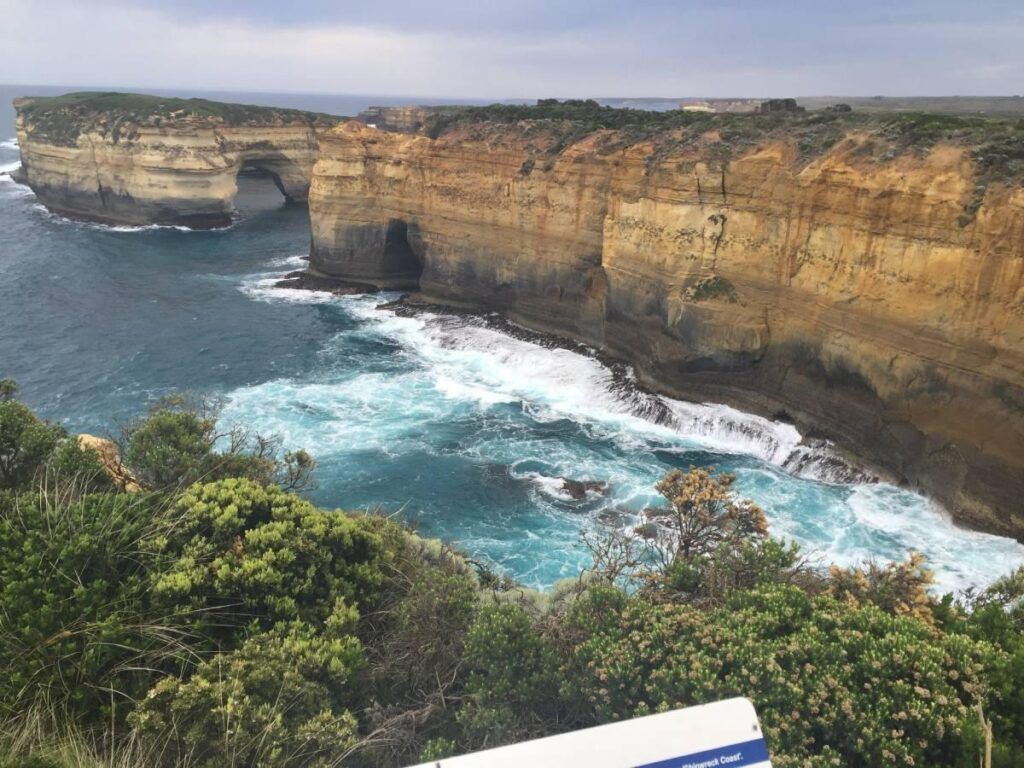Best Practices for Environmental Management in Rafting, Canoeing, and Kayaking
The Green Guide to Freshwater Paddling is dedicated to promoting the seven principles of Leave No Trace ethics for minimal impact travel in freshwater environments. The guide is designed to help recreational paddlers, commercial white-water paddlers, tour operators, and their clients improve their environmental management practices and reduce their impact on rivers, riverbanks, and lakes.
- Best Practices for Environmental Management in Rafting, Canoeing, and Kayaking
- IMPORTANCE OF MINIMAL IMPACT TECHNIQUES
- Plan Ahead & Prepare: Essential Steps for Minimal Impact Paddling
- Travel and Camp on Durable Surfaces
- Dispose of Waste Properly
- Leave What You Find
- Minimise the Impact of Fires
- Respect Wildlife
- Be Considerate of Your Hosts and Other Visitors
IMPORTANCE OF MINIMAL IMPACT TECHNIQUES
Minimal impact techniques are critical for protecting the environment and preserving the wilderness for future generations. They also enhance the outdoor experience and contribute to a more positive and fulfilling adventure for all.
Plan Ahead & Prepare: Essential Steps for Minimal Impact Paddling
Repackage Food:
Plan your meals in advance to minimize waste and leftovers. Repackage food into reusable containers or plastic bags to reduce the amount of potential rubbish or litter you bring to the river. Pack food in waterproof containers to keep it attractive and edible.
Carry Water:
Water is a precious resource, and it is essential to practice water conservation. Carry extra drinking water and consider bringing a water purification system or tablets.
Equipment:
Taking proper and adequate equipment is crucial for Leave No Trace principles. Plan to use a camp stove for cooking your meals. Bring all necessary equipment for washing dishes, straining dishwater, and carrying out rubbish and human waste. Don’t forget to bring safety equipment for cold, wet days and unexpected paddling mishaps.
Knowledge of the Area:
Familiarize yourself with the weather and water conditions, such as level, temperature, and speed, and be aware of any fluctuations you might expect. Be cautious of flash flooding and know the safety exits along the corridor. A river map can be helpful in determining where to camp, and avoid overshooting your planned site. Take time to scout rapids, as wrapped rafts, pinned kayaks, and other lost gear only contribute to river pollution.
Know the Regulations:
Check with land managers for information and special considerations of the river you are visiting. Obtain permits or permission if required.
Qualified Guides.
Make sure your guides have adequate skills in first aid, safety, health and hygiene, and client management, as well as technical paddling skills. Guides should also have a basic understanding of ecology to explain how minimal impact practices work.

Travel and Camp on Durable Surfaces
Boating:
- Take care to avoid trampling shorelines while exiting and entering the river.
- Choose durable surfaces like rock, gravel or sand to load and unload your boat.
Walking:
- Stay on established trails and walk in single file to avoid widening the trail.
- In unspoiled areas, avoid creating new trails and be careful not to trample vegetation.
- Learn about the local vegetation, including which species are fragile and which are resilient.
- When taking breaks or unloading gear, try to do so on large flat rocks or other durable surfaces to minimize impact.
- Avoid revegetation areas.
Camping:
- Use established campsites if available, and avoid creating new ones.
- Camp on rock, sand, or gravel where impact is minimal. When these surfaces are not available, look for areas with durable grasses or weeds.
- Avoid digging, landscaping, or trenching around tents.
- When leaving a campsite, “naturalize” it by fluffing up flattened grasses, brushing away boot prints, and replacing any moved rocks.
- Avoid damaging live shrubs, woody plants, or branches.
- Avoid digging, landscaping, or trenching.
- When leaving a campsite, “naturalize” it by fluffing up flattened grasses, brushing away boot prints, and replacing any moved rocks.
Dispose of Waste Properly
Rubbish:
- Minimize the amount of rubbish by planning ahead to reduce excess packaging.
- Pack out all rubbish, including organic kitchen waste, in a durable container.
- Do not burn rubbish.
- Take care to tie down loose gear on top of your boat to avoid loss and, therefore, the pollution of water bodies.
Washing:
- Pans, cutlery, and crockery should never be washed directly in water bodies.
- Wash 100 meters from the edge of rivers and lakes.
- Pour used wash water through a fine mesh strainer to remove small food scraps and then carry them out. Scatter grey water on bushes, leaf litter, or grassy areas, or into a small pit well away from water bodies.
- Use biodegradable detergent, or preferably no detergent at all, instead of relying on hot water alone.
- Never use shampoo or soap in rivers or lakes. Try to avoid using detergents for bathing.
- If bathing is necessary, use buckets or bush showers located at least 100 meters away from water bodies.
- Hand washing for hygiene after toileting should also be done using biodegradable detergent or hand sanitizer, at least 100 meters away from water bodies.
Toileting:
- Use toilets and other developed sites for human waste disposal when they are available.
- In most situations, best practice requires using portable toilets with all waste carried out to a sewage system for incineration.
- Plastic bag-lined ammo boxes or rocket boxes are still widely used, while stainless steel units are available commercially and used by many larger operators.
- Most National Parks recommend the method of burial disposal in low-use areas. In this case, individuals should bring a trowel to dig a cat hole 10-15 cm deep, located more than 100 meters from water and well away from climbing routes.
- If the use of toilet paper is necessary, use it sparingly and bury it deeply or carry it out.
- Natural toilet paper, such as smooth stones, grass, sticks, or bits of bark, can eliminate the need for man-made toilet paper altogether. Make sure the plant material is dead and non-irritating, and bury it in the cat-hole as well.
- Urinate on bare ground away from vegetation, campsites, and tracks.
Leave What You Find
Respecting Culture:
- Out of respect for Indigenous cultures and to protect their longevity, avoid approaching or visiting Indigenous sites.
- Always seek permission from the appropriate authorities before visiting any cultural or historical sites.
- Contact local land managers for information on the location of sensitive sites.
Preserve Nature:
- Leave shells, feathers, flowers, fossils, artefacts and other natural items in their place to preserve the experience of discovery for future generations.
- Learn about the important ecological role of these objects and educate others.
- Avoid areas where rare and vulnerable plants or animals can be found. Consult local land managers for information on these locations.
- Help to maintain the unique qualities of natural areas for future generations.
Preserve the Past:
- Do not disturb, excavate or remove any archaeological, historical, or cultural artefacts from public or wilderness lands. These activities are illegal.
Prevent the Spread of Non-Native Species:
- Avoid spreading non-native plant and animal species, which can be difficult or impossible to eradicate once established.
- Dispose of human waste properly and at least 100m away from water to prevent the spread of diseases like Giardia or Cryptosporidium.
- Do not transport flowers, weeds, or aquatic plants into or out of natural areas.
- After each trip, thoroughly clean and empty your gear, including packs, tents, pegs, boots, boats, fishing equipment, and vehicles. This will help to prevent the spread of harmful fragments, such as the dieback fungus Phytophthora cinnamoni, and other invasive species.
- Use designated wash stations where available.
- If you encounter areas with known pathogens, report them to the relevant authorities and avoid visiting infected areas first.

Minimise the Impact of Fires
Impacts of Campfires:
- Building campfires can compromise the natural appearance of the wilderness and increase the demand for firewood.
- Fire rings filled with ashes, half-burnt logs, food, and trash can be unsightly.
- Campfires also pose a risk of starting bushfires.
Local Regulations:
- Check with local landowners and managers to determine if fire building is permitted and during what season.
Cooking:
- Carry a lightweight stove and sufficient fuel for cooking.
- Use a candle with a drip catcher for light.
Heat:
- Bring enough warm clothing to avoid the need for fires for warmth.
Minimal Impact Fires:
- If allowed and desired, build a minimal impact fire.
- Consider wind, weather, location, and wood availability.
- Use small, dead pieces of wood found on the ground. Do not break branches from trees or bushes.
- Utilize existing fire rings. Disassemble and restore any extra fire rings to their natural state.
- If no fire rings are present, build a mound fire. Place a large ground cloth or fire pan on the ground, and gather sand, gravel, or soil with low organic content using a stuff sack and trowel. Construct a pedestal approximately 25 cm thick and 75 cm in diameter on the ground cloth or fire pan.
- Burn all wood to ash and extinguish completely with water.
- Scatter the cold ash widely and spread out the soil.
Respect Wildlife
Sensitivity to the Ecosystem:
- Educate yourself on the role each species plays in its environment and the importance of its position within the ecosystem.
- Recognize the impact that visitors can have on wildlife habitats.
- Avoid disturbing nesting sites of raptors during spring and summer. Observe the birds from a distance to determine the location of their nests and steer clear.
- Observe wildlife from a safe distance to allow them to carry out their normal activities such as feeding, hunting, or mating. Do not touch nests or young animals, as this may cause their parents to abandon them.
- Do not feed wild animals to maintain their wildness and prevent them from developing a dependence or familiarity with humans.
- Store food and waste securely and maintain a clean campsite.
Pets and Wildlife:
- Pets and wildlife do not mix. Do not bring pets into wildlife habitats, as many national parks have restrictions on pets. Check with local land managers for regulations.
- Report any injured animals to the local land managers and do not attempt to handle the animal yourself.

Be Considerate of Your Hosts and Other Visitors
Respect your Hosts:
- Learn about the cultural history of the land and recognize, acknowledge, and respect local knowledge.
- Seek permission or obtain a permit before visiting.
Outdoor Etiquette:
- We share the wilderness with other outdoor enthusiasts, so it’s important to respect their experience by minimizing negative impacts.
- Be efficient and avoid congesting boat ramps and other entry and exit points.
Cooperative Spirit:
- In the wilderness, we may need to rely on others during unexpected events. Our experience often depends on how we treat others and how they treat us.
Keep a Low Profile:
- Take breaks in discreet places to minimize impact on other groups. If possible, camp out of sight and sound of other visitors, and avoid wearing bright clothing or using brightly-colored tents that could disturb wildlife and other recreationists.
Let Nature’s Sound Prevail.
- Keep noise levels reasonable and listen to the sounds of nature.
- In canyon corridors, keep voices low and talk quietly, especially in large groups.
- Avoid using bright lights, radios, electronic games, mobile phones, and other urban devices that can be intrusive.

